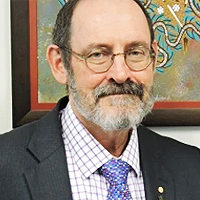The pathogenesis of psoriasis: insight into a complex “Mobius Loop” regulation process
Published on: 22nd October, 2021
OCLC Number/Unique Identifier: 9322473772
Psoriasis is a chronic inflammatory skin disease with a complex mechanism, which is believed to be mainly based on immune disorders and activation of inflammatory pathways. However, we have combed through the literature and found that the pathogenesis of psoriasis might involve a “mobius loop” of “immunity-inflammation-oxidative stress-proliferation” process. The disordered immune environment of the skin might act as the basis, the outbreak of inflammatory factors as the mediator, and the imbalance of oxidative stress homeostasis as the activator. These factors work together, leading to abnormal proliferation of keratinocytes and further immune abnormalities, finally aggravating psoriasis. Therefore, here we review the latest evidence and advance in the pathogenesis of psoriasis, trying to contribute to further understanding and treatment of psoriasis.
Non-invasive Serological Markers of Hepatic Fibrosis – Mini Review
Published on: 14th May, 2024
Aim: This study examines the pathological outcomes of chronic liver injuries, with a focus on liver fibrosis. It emphasizes understanding the structural changes within the liver that may lead to cirrhosis and functional impairments, crucial for developing targeted antifibrotic therapies.Methods: Our approach reviews existing literature detailing the use of traditional diagnostic methods—biochemical and serological tests alongside liver biopsies. Additionally, we evaluate the reliability and efficacy of non-invasive techniques such as serological test panels and imaging examinations. These methods are compared to understand their viability as supplementary or alternative diagnostic tools to liver biopsy.Significance: Liver fibrosis, if unmanaged, can progress to severe conditions such as cirrhosis and hepatocellular carcinoma, making it vital to understand its progression and treatment options. This study underscores the need for precise and non-invasive diagnostic tools in the clinical management of liver fibrosis, providing insight into the progression of chronic liver diseases and potential therapeutic targets.Conclusion and future perspectives: The research confirms that while liver biopsy remains the definitive method for staging liver fibrosis, its risks and limitations necessitate the use of enhanced non-invasive diagnostic techniques. These methods have shown promising results in accuracy and are critical for broadening clinical applications and patient safety.It is recommended that the scientific community continue to develop and validate non-invasive diagnostic tools. Enhancing the accuracy and reliability of these tools can provide a cost-effective, accessible, and safer alternative for large-scale screening and management of liver fibrosis in asymptomatic populations. Additionally, integrating advancements in radiologic and serological markers can further refine these diagnostic methods, improving overall patient outcomes.
A comparitive study on square stepping exercise versus balance training exercises on fear of fall and balance in parkinsonism patients
Published on: 31st December, 2021
To study the effect of square stepping exercise and balance exercise to improve balance impairment and reducing the fear of falling on Parkinsonism patient. This is a pre-test and post-test experimental design comparative in nature. Subject aged between 60 – 70 years having Parkinson’s disease were included for the study. Group A (15 subjects) participated in square stepping exercise for 5 times in a week for 4 weeks and Group B (15 subjects) participated in balance exercise for 5 times in a week for 4 weeks. The outcome was measured by using Berg balance scale, Time up and go (TUG) test and fall efficacy scale. Statistical analysis done by using pair ‘t’ test and unpair ‘t’ test showed that there is significant improvement in subject who underwent the square stepping exercise program compared to balance exercise on fear of fall and balance in parkinsonism patients. It is concluded that square stepping exercise group exhibited statistically significant improvement in Berg Balance Scale, Time up and Go test score and fall efficacy test score compared to the balance training exercise group.
Refractory priapism associated with anti-psychotics. Report of a case for risperidone
Published on: 8th May, 2023
Priapism is a prolonged erection, usually painful, that occurs in the absence of sexual desire or stimulation, is not relieved by masturbation or intercourse and is the consequence of a mismatch in the regulatory mechanisms that initiate penile erection and those that allow its detumescence. One of the main causes of low-flow priapism is the use of drugs with an α-adrenergic antagonist effect, among which antipsychotic drugs stand out. Our objective is to present a clinical case and review the literature on the use of antipsychotics in medicine, psychiatry and other specialties and their relationship with the dose of the psychoactive drug in the onset of priapism. We present a 23-year-old male patient, single, with a significant history of mild Autism, for which he has received regular treatment with 6 mg daily of risperidone. He started experiencing priapism spontaneously for the last 4 days until a family member took him to the Emergency Room – intense, persistent and painful penile erection. Given the failure of the initial medical treatment for priapism, it was decided to perform multiple distal cavernous-cancellous shunts with improvement after 72 hours and discharge of the patient. We understand that there is a high affinity of antipsychotics for the α 1-adrenergic receptor, risperidone has an α 1 antagonist capacity. In fact, the third cause of priapism cases induced by atypical antipsychotics is secondary to risperidone, including recent cases associated with its parenteral depot presentation RisperdalConsta®.
Pneumocephalus following labour epidural analgesia, a rare case report
Published on: 5th May, 2021
OCLC Number/Unique Identifier: 9041187138
The lumbar epidural analgesia is commonly used for labour analgesia. The “loss of resistance to air” LORA technique is commonly used for recognition of epidural space. One of the rare complications of this technique is Pneumocephalus (PC). We want to present a case of Pneumocephalus which the mother developed during epidural analgesia in labour. The patient complained of severe headache immediately after attempt at epidural catheter insertion. The symptoms progressively worsened following delivery. A postnatal anaesthetic review was performed and an urgent CT scan of the brain was arranged that showed pneumocephalus. A conservative management pathway was followed with liberal analgesia, oxygen inhalation and keeping the patient mostly in supine position. Her symptoms regressed in severity over the next three days and subsided after one week. We believe that the amount of air used for LORA should be minimized; LORA should not be used after dural puncture and the use of normal saline would alleviate the risk.
Epidemiological profile of the homeless population assisted by voluntary initiative and the social impact on access to healthcare: an investigative study in Curitiba, Brazil
Published on: 7th July, 2021
OCLC Number/Unique Identifier: 9137583522
Objective: The study aimed to describe the epidemiological profile of the homeless population and report the social impact on healthcare services provided by a voluntary initiative during one-year of follow-up.
Method: This is an investigational study, carried out in an important capital-city of southern Brazil, which included 509 individuals in 2019. Findings were divided into three segments: sociodemographic, substance use/abuse and impact on healthcare.
Results: The sociodemographic profile found was predominantly male, white, single, heterosexual, educated in elementary or high school, in regular use of legal and/or illegal substances, and living as homeless for less than a year. The impact of assistance provided on the perception of individuals who returned in subsequent actions was evident.
Conclusion: The significant increase in the number of homeless people in large urban centers can benefit from the support of non-profit organizations to address the deficiencies faced in accessing basic health services. Based on this, we seek to advance in the development of new policies that improve local healthcare for the vulnerable population, to be more assertive to their needs.
To compare serum Vitamin D status in pre-eclamptic and non-preeclamptic pregnant women in labour: A tertiary care centre study of Northern India
Published on: 28th January, 2022
OCLC Number/Unique Identifier: 9406533422
Background: Pre-eclampsia and eclampsia have remained a major global public health threat in contributing significantly to maternal and perinatal morbidity and mortality. Based on the inverse relationship between serum 1,25(OH)2D3 levels and plasma renin activity found previously, it is speculated that 1,25(OH)2D3 might be a negative endocrine regulator of renin production in vivo. During pregnancy, vitamin D may play a role in implantation and placental function potentially due to angiogenic, immunomodulatory, and antiinflammatory effects. Vitamin Ddeficiency can affect the health of both mother and fetus by increasing the production of inflammatory cytokines and stimulating the activity of T-regulating cells. Vitamin D is emerging as a promising agent for pre-eclampsia prevention. Aims and objectives: The objective of this study is to compare the vitamin D levels in pre-eclamptic and healthy non-pre-eclamptic pregnant women in labor and find out the relationship between vitamin D levels and pre-eclampsia. Methodology: The present cross-sectional study was carried out on pregnant women with pre-eclampsia in labor. For each case with pre-eclampsia, one uncomplicated, normotensive pregnant woman in labor was taken as control. On admission to the labor room detailed history, physical examination followed by thorough obstetrics and systemic examination was done. Required investigations were done including vitamin D and calcium levels. Maternal and fetal condition was monitored during labor/cesarean section, mode of delivery, maternal and fetal outcomes were recorded. After delivery, 2cc of cord blood was collected in a serum tube and sent for vitamin D levels. Data was collected and analyzed statistically using Epi-info version 7.1.Results: It was observed that the patients in both groups were comparable with respect to demographic and obstetrics characteristics except for significantly high BP in group I. Vitamin Ddeficiency (i.e. < 20 ng/ml) was significantly more in group I as compared to group II and the difference was highly significant (p < 0.0001). Similarly, the mean maternal calcium levels were significantly lower in group I in comparison to group II (p < 0.0001) i.e. the mean maternal calcium level in group I and group II were 8.03 ± 0.94 and 9.19 ± 0.67 respectively. It was also observed that the level of 25-OH-D in neonates of preeclamptic women was significantly lower than for those of the normal pregnant women (p < 0.0001). Conclusion: Vitamin D deficiency is highly prevalent in all parts of the world. Pregnant women and neonates are highly vulnerable to vitamin D deficiency. Preeclampsia is indeed associated with lower vitamin D levels and the pathophysiology of pre-eclampsia involves vitamin D and calcium metabolism through their role in immunomodulation, angiogenesis and anti-inflammatory effects. From the present study, it was observed that vitamin D and calcium levels were significantly lowered in women with pre-eclampsia as compared to those of the normotensive pregnant women. So early detection of vitamin D and calcium deficiencies may be helpful in preventing occurrence of PET and its complications.
Mesoscopic irreversible thermodynamics of morphological evolution kinetics of helical conformation in bioproteins ‘DNA’ under the isothermal isobaric conditions
Published on: 11th March, 2020
OCLC Number/Unique Identifier: 8570215259
The morphological evolution kinetics and instabilities of alpha helical peptide 3.613, which involves large amount of stored torsional elastic deformation energy (3-40 eV/molecule), is formulated by the variational method based on the connection between the rates of internal entropy production and the changes in the global Gibbs free energy, assuming that one has isobaric irreversible processes under the isothermal conditions. The present mesoscopic nonequilibrium thermodynamic approach relies on the fact that the global Gibbs free energy of helical conformation involves not only the bulk Gibbs free energy of the amino-acid back bone structure but also the interfacial Gibbs free energy of the enclosing cylindrical shell or the cage associated with the side-wall molecular branches, and their interactions with the immediate surroundings. The proposed variational analysis applied directly on the proposed macro-model has furnished a nonlinear integral equation in terms of the normalized and scaled internal and external variables. This allows us to track down the motion of the total pitch height of the alpha polypeptide along the well-defined trajectories in the displacement-time space, dictated not only by the initial configuration of the helix but also through the gradients of the global Gibbs free energy of the strained helical conformation as the main driving force. In the negative manifold, there is a well-defined region below the dynamic instability regime, in which the helical conformation can evolve towards the nonequilibrium stationary states by expanding, or contracting, depending upon whether the interfacial free energy and/or the applied stress system are below or above the well-defined thresholds level dictated by the initial pitch height. The highest life time may be realized along that trajectory, which follows up the threshold level of the interfacial specific Gibbs free energy, which is gs = -315 erg/cm2. In the upper region of the negative manifold, the helical conformations are driven by the very large applied uniaxial tension or the negative pressure induced by the thermal expansion, in the range of p > 1GPa and/or the strong negative interfacial free energies [3-4 pH] or their combinations, they show strong kinematic instabilities, which can cause not only the accelerated unfolding phenomenon but also cause large extensions that end up with the catastrophic decimations by ruptures and fragmentations. In the positive manifold, the aging behavior of the polypeptide follows up a S-shape path having rather speedy aging behavior compared to the negative manifold, which is separated from by a well-defined boundary, which represents the isochoric path having longest relaxation times, which can be achieved with great stability. Finally, one could attempt to estimate the upper limit of the relaxation time of aging for the modern hominin, from samples of exceptional preservations, relying on the present nonequilibrium theory as well as on the very limited knowledge on the post-mortem DNA and the present pitch heights of the modern hominin, which is found to be about 25,840 yrs, with a life expectation of 451,800 yrs. These figures are very close to those calculated for Neanderthals (SH), which are found to be 31,820 yrs and 499,100 yrs, respectively.
Evaluation of influence of IL-6 C-572G gene polymorphism and clinical factors on positive platelet antibody test
Published on: 15th January, 2021
OCLC Number/Unique Identifier: 8899339688
Background: Interleukin-6 (IL-6) promotes antibody production. The objective of this study was to investigate whether IL-6 C-572G single nucleotide polymorphisms (SNP) and clinical factors are associated with positive platelet antibody test.
Materials and methods: Thirty platelet recipients with platelet antibodies (responders) and 20 platelet recipients without platelet antibodies (non-responders) were randomly selected. The -572 C>G (rs 1800796) SNPs in the promoter region of IL-6 gene were genotyped by polymerase chain reaction (PCR)-restriction fragment length polymorphism (RFLP) method. Solid phase red cell adherence assay (SPRCA) was used for platelet antibody detection.
Results: Age, sex, percentage patients with benign diseases, and percentage of patients with homozygotes for the C allele at position -572 of the IL-6 gene were similar between responders and non-responders. Although the amounts of platelets pheresis transfused to patients with hematologic diseases were higher than those of non-hematologic diseases (47.2 ± 54.2 vs. 17.4 ± 13.8 units, p = 0.019), detection rate of platelet antibodies was lower in patients with hematologic diseases than that in patients with non-hematologic diseases (42.3% vs. 79.2%, p = 0.01).
Conclusion: There was no association between IL-6 C-572G gene polymorphism and positive reactivity in solid phase platelet antibody detection method in platelet recipients.
The PVSG/WHO versus the Rotterdam European clinical, molecular and pathological diagnostic criteria for the classification of myeloproliferative disorders and myeloproliferative neoplasms (MPD/MPN): From Dameshek to Georgii, Vainchenker and Michiels 1950-2018
Published on: 17th April, 2019
OCLC Number/Unique Identifier: 8164019922
The present article extends the PVSG-WHO criteria into a simplified set of Rotterdam and European Clinical, Molecular and Pathological (RCP/ECMP) criteria to diagnose and classify the myeloproliferative neoplasms (MPNs). The crude WHO criteria still miss the masked and early stages of ET and PV. Bone marrow histology has a near to 100% sensitivity and specificity to distinguish thrombocythemia in BCR/ABL positive CML and ET, and the myelodysplastic syndromes in RARS-T and 5q-minus syndrome from BCR/ABL negative thrombocythemias in myeloproliferative disorders (MPD). The presence of JAK2V617F mutation with increased erythrocytes above 6x1012/L and hematocrit (>0.51 males and >0.48 females) is diagnostic for PV obviating the need of red cell mass measurement. About half of WHO defined ET and PMF and 95% of PV patients are JAK2V617F positive. The combination of molecular marker screening JAK2V617F, JAK2 exon 12, MPL515 and CALR mutations and bone marrow pathology is 100% sensitive and specific for the diagnosis of latent, early and classical ECMP defined MPNs. The translation of WHO defined ET, PV and PMF into ECMP criteria have include the platelet count above 350 x109/l, mutation screening and bone marrow histology as inclusion criteria for thrombocythemia in various MPNs. According to ECMP criteria, ET comprises three distinct phenotypes of true ET, ET with features of early (“forme fruste” PV), and ET with a hypercellular erythrocythemic, megakaryocytic granulocytic myeloproliferation (EMGM or masked PV). The ECMP criteria clearly differentiate early erythrocythemic, prodromal and classical PV from congenital polycythemia and idiopathic or secondary erythrocytosis. The burden of JAK2V617F mutation in heterozygous ET and in homozygous PV is of major clinical and prognostic significance. JAK2 wild type MPL515 mutated normocellular ET and MF lack PV features in blood and bone marrow. JAK2/MPL wild type hypercellular ET associated with primary megakaryocytic granulocytic myeloproliferation (PMGM) is the third distinct CALR mutated MPN. The translation of WHO into ECMP criteria for the classification of MPNs have a major impact on prognosis assessment and best choice for first line non-leukemogenic approach to postpone potential leukemogenic myelopsuppressive agents as long as possible in ET, PV and PMGM patients.




